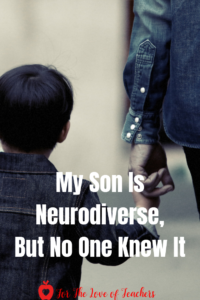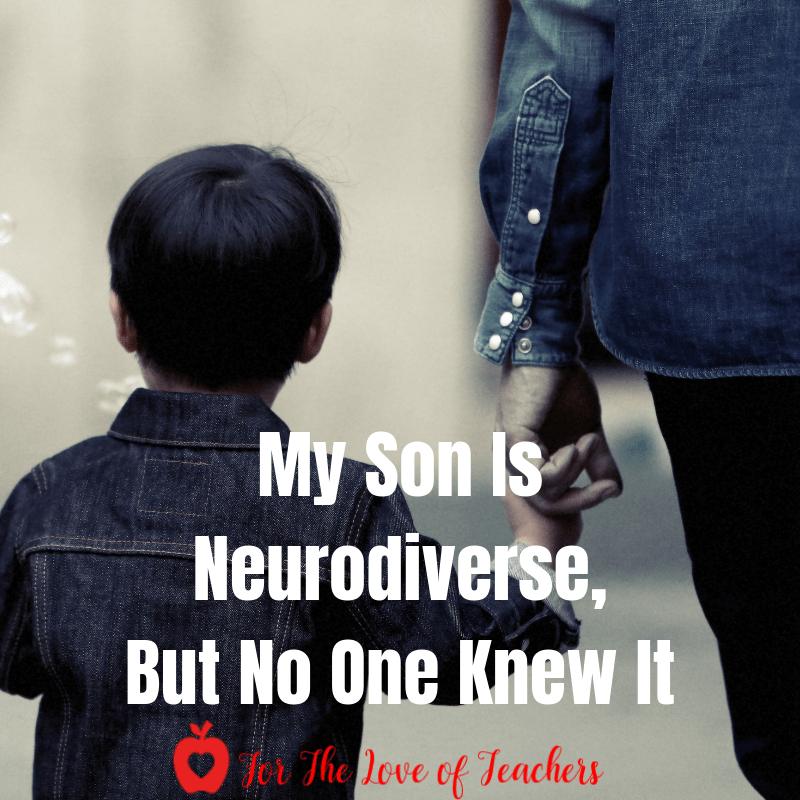In my post, 4 Common Misconceptions of Gifted Learners, I bust some common myths about gifted learners based upon my experience teaching in a self-contained gifted classroom for 12 years. Then I spoke with Patti, founder of Kid Kite Mama, who shared her personal experience with me about facing some of the same myths and challenges when it came to properly identify her son as gifted. This mom wants to share her story and tell more about what giftedness is and what it isn’t.
Patti’s Story:
In late August 2018, I was told that my son is “highly gifted.” At the time, the possibility of this hadn’t been on my radar long.
In fact, I thought the first person who uttered “the G-word” was way off the mark. She’d never even met him; however, based on what I told her, she said he sounded like another boy she knew, who is gifted.
As it turned out, she was right.
While that realization scared me in many ways, another part of me was thankful. It provided a major piece to a puzzle I’d been trying to assemble since he was a kindergartner. (That’s when the exclusion and bullying started.)
I realized that “giftedness” was nothing like the Easy Street fairytale people buy into. As I tried to wrap my head around what that term really meant, I began reading. A lot. And watching hour-long videos on YouTube.
I was blown away by the research and insights. Was this how my child really experienced the world? There was such a lack of awareness!
And so many misconceptions…
I also couldn’t help but think about how every general-education teacher, specials teacher, school counselor, school administrator, and staff member monitoring lunchroom dynamics, should have this information, too.
Here’s why:
-
“Giftedness” is a type of neurodiversity. The way these kids’ brains develop is so distinct that you can see the differences on MRIs. In addition, these kids process – and respond to – input in ways that are often vastly different than a neurotypical high achiever.
-
Like any type of neurodiversity, giftedness is a 24/7 phenomenon. It doesn’t pause during less structured times like recess and lunch, and it doesn’t turn off the moment they leave school. It’s with them on the bus, in their neighborhoods, on their sports teams, everywhere. And peers often pick up on it quicker than adults.

-
Not all gifted kids are high achievers; especially as they become tweens/teens. If they have any executive-function deficits, that’s when it usually starts to become really noticeable. (Adults tend to misinterpret those academic struggles as apathy or laziness.)
-
High intellect doesn’t tend to be the most noticeable trait of gifted students. Uneven development and intensities (a.k.a. overexcitability) tend to be more obvious.

-
Gifted kids develop asynchronously (unevenly) from the neurotypical children. They tend to be ahead of their age-mates intellectually, but not socially and/or emotionally. In fact, many have deficits in one or both of those developmental areas. The reason for this involves how their brains develop. (If you’re visualizing an incredibly smart, but quirky kid, who still sleeps with a teddy bear, you’re on the right track. In the privacy of their homes, these children can be much more fragile and immature than they may appear at school.)
-
Gifted children also experience input in more intense ways than neurotypical kids. Polish psychologist Kazimierz Dabrowski discovered this in the 1960s and called these heightened experiences “overexcitability.” (Other folks say “intensities” or “super-sensitivities.”) Regardless of how you refer to them, there are five types: emotional, sensual, intellectual, psychomotor and imaginational.
-
Because of their uneven development and intensities, way too many gifted children have been misdiagnosed with conditions, such as ADHD, Asperger’s, bipolar disorder, OCD, ODD, sensory processing disorder and more. (Think about how that impacts the way you approach a student.)

-
Some gifted children also have one or more disabilities. (Think 98th percentile for I.Q., but 9th percentile in something else.) These kids are called “twice exceptional” (2e) or “multi exceptional” because their skills and competencies are all over the map. 2e kids are particularly difficult to figure out because their weaknesses often overshadow their strengths or vice versa. (Young teachers may not get this, but Executive Function and 2e Coach Seth Perler has a great analogy for this. I literally laughed out loud at his “old school” stereo-equipment visual because it was so spot on!)
-
School counselors’ “friendship groups” rarely help gifted and 2e kids because those groups are designed for neurotypical students.
There are many other reasons that all educators need to know fact from fiction when it comes to “giftedness,” but hopefully the list above is starting to paint a compelling picture.
General-education teachers spend a lot more time with these students than their gifted educators, so they need to know the basics, too. It will make everyone’s lives easier, and most important of all, these children will feel understood. And maybe, just maybe, a little less “weird.”
 About Patti:
About Patti:
Once Patti began educating herself on giftedness, she realized there was a huge need for awareness and myth-busting about the being “gifted,” so she created a blog and called it Kite Kid Mama. She says children like her son are similar to kites. They can reach impressive heights, but not on their own, because of their fragility social-emotional challenges, misdiagnosis, and executive function deficits.
If you’d like to hear what else she has to say about this topic, follow her at KiteKidMama.com. She’s got free bookmarks, a free gifted traits cheat sheet, and a lot more. You can subscribe to learn more.
If you like it, then pin it!



Christine Weis is a passionate educator, classroom management coach, wife, and mom of two busy boys. She enjoys teaching, writing, and creating resources for teachers.





Love this article! People rarely seem to recognize gift students as neurotypical but it’s true. These children are in need of just as much attention and support as students with special needs. Thank you for sharing this info!